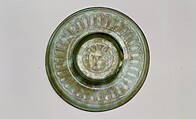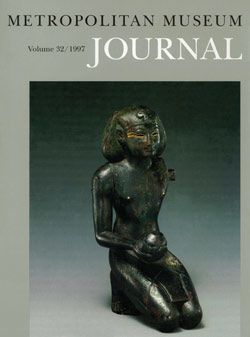Glass plate with head of Medusa
Translucent pale blue green.
Rounded, upturned, and outsplayed rim, curving in below to flat body; integral low base ring with rounded edge.
On underside of body, circular pattern of thirty-five outward-pointing incised tongues, outlined with incised lines, within a raised border around base ring; with base ring, an incised circle surrounds an engraved head of Medusa with flowing locks and wings, facing frontally but looking slightly to the left.
Intact, except for large chip in base ring; tiny pinprick bubbles; dulling, patches of pitting with brown weathering on upper surface of body, iridescence and faint whitish weathering on underside.
This small glass plate was published in 1997 as a 19th-century forgery, but a more recent study has concluded that both the object and the cut decoration are Roman.
Although this vessel is said to have come from Rome, its closest parallels are known from sites such as Trier and Xanten in the Rhineland. In later Roman times, some cast glass was produced in preference to blown glass, as with this example, allowing for a thicker vessel wall and deeper cutting of the decoration.
Due to rights restrictions, this image cannot be enlarged, viewed at full screen, or downloaded.


